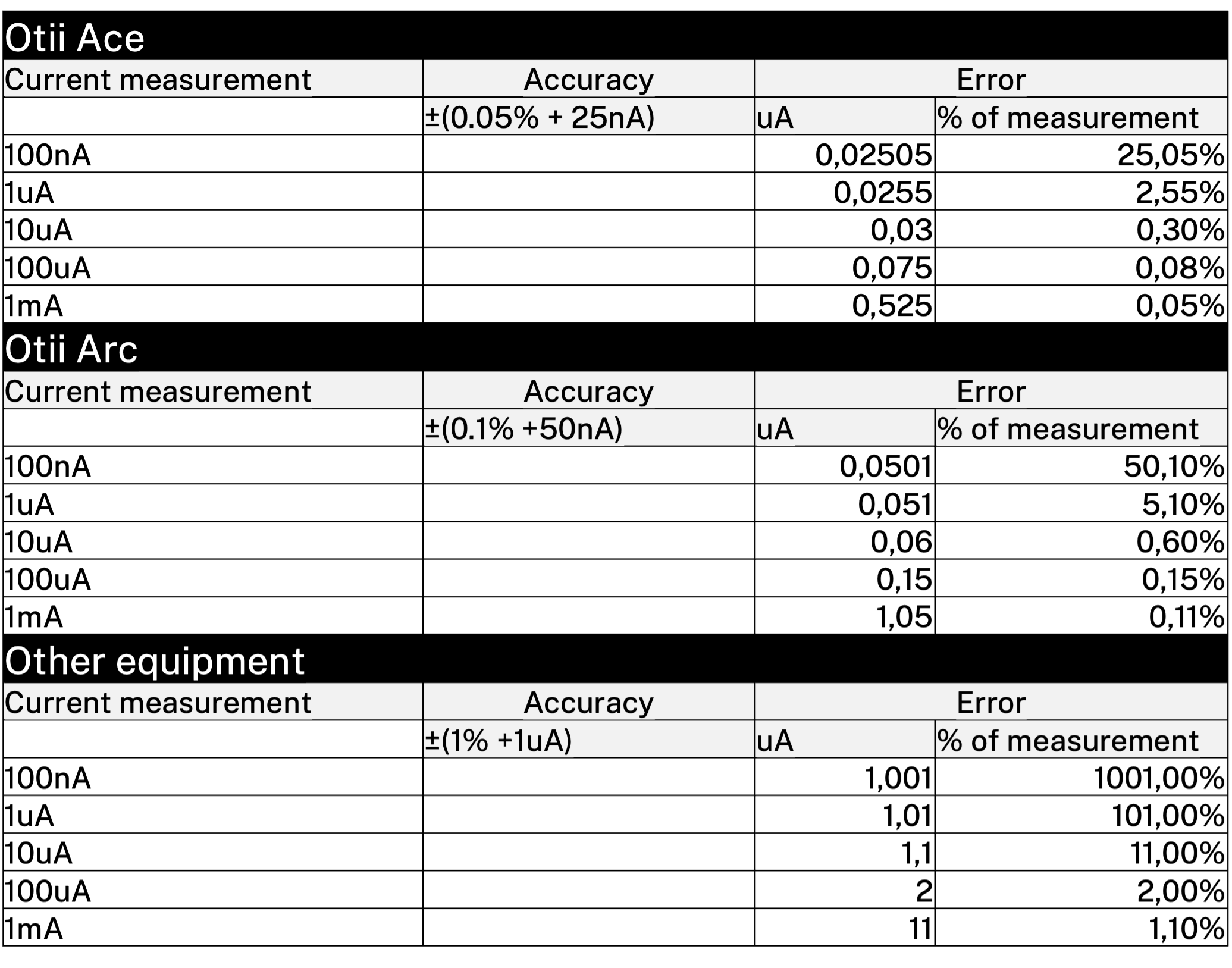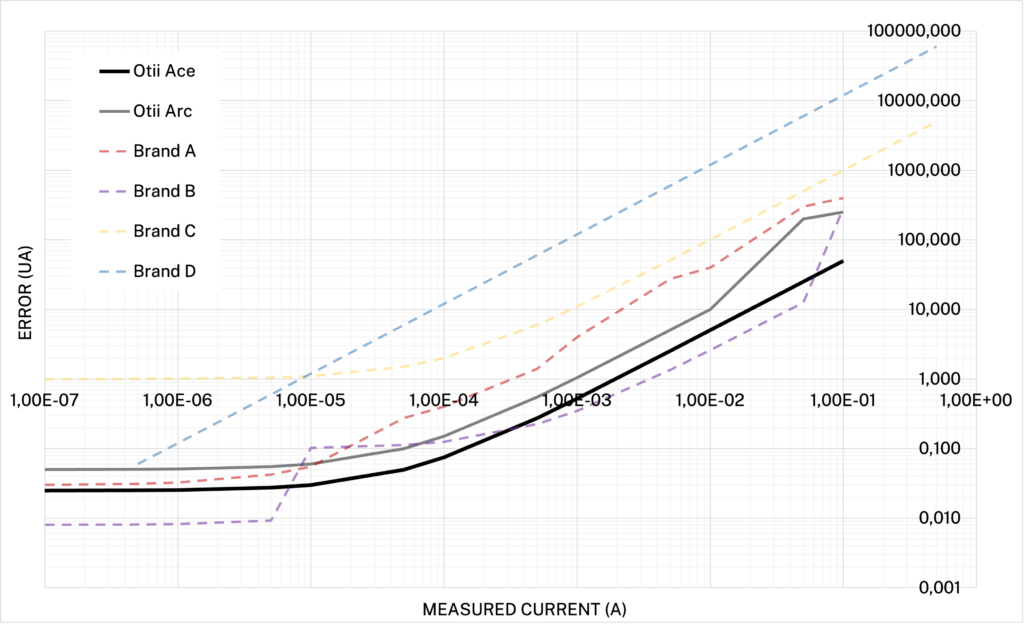How accurate is your low current measurement?
How accurate is your low current measurement?
When selecting an instrument for current measurements, it’s important to check the accuracy specifications. These are typically expressed as ±(gain error + offset error), or ±(X% + Y), where X represents the percentage error and Y denotes the offset error. This means that your measurement value can be offset by an error of Y and have a percentage error X.
The accuracy for the main channel of the Otii Ace when measuring low currents is ±(0.05% + 25nA) and for Otii Arc it is ±(0.1% + 50nA). What does this mean when you start measuring? How does it impact low current measurement accuracy? Let’s compare the Otii Ace’s and Arc’s accuracies with another instrument that has a more common accuracy rating of ±(1% + 1µA).
Interpreting the data sheet
Let’s say you want to measure a sleep current of 1µA.
Using the Otii Ace, you would get a result of 1µA ± 25.5nA (0.05% of 1µA is 0.5nA, plus an additional 25nA, totaling 25.5nA). Using the Otii Arc, you would get a result of 1µA ± 51nA (0.1% of 1µA is 1nA, plus an additional 50nA, totaling 51nA). In comparison, using the other measurement instrument, you might see 1µA ± 1µA (1% of 1µA is 10nA, plus an additional 1µA, resulting in 1010nA).
For accurate measurements of 1µA sleep current, if the measurement fluctuates between 0µA and 2µA, it’s clear that the latter instrument would not be very helpful.

Look across the whole measurement range
The accuracy for any instrument is usually specified for specific ranges of measurements. Hence, you could get great accuracy for a small range of currents measured but also very inaccurate measurements for other ranges. Here is an example of the measurement errors across a wider range of current measurements, for a number of instruments and measurement boards on the market (the data is gathered from the available datasheets of instruments like Keysight, Joulscope, Power Profiler Kit 2):

When it comes to measurement accuracy, it’s important to know your short- and long-term requirements. Review all the ranges in the datasheet to understand an instrument’s precision. In some cases, you may need a highly precise instrument, which could mean paying more for a single outstanding feature (purple curve), as is typical with traditional lab equipment. On the other hand, opting for a very cheap option often means accepting lower performance (blue curve). However, for many cases, reasonable accuracy is sufficient. You can choose an instrument that balances good accuracy across a wide measurement range with additional features that aid in energy optimization.
Switching for high dynamic range
To support a wide measurement range (from nA to A), most instruments rely on auto-ranging. A typical DMM (digital multimeter) will switch to a higher range when an overload condition occurs. During this switchover, measurements may be unavailable or inaccurate, making it challenging to monitor dynamic loads where sleep currents can be in the single-digit µA range, and operational currents can reach hundreds of mA.
The less the instrument is switching the less problems you encounter. In Otii Ace and Arc the switching is performed only once.
Precision DMMs often use relays to switch shunts in and out of the measurement, which takes time and can result in delays. Even with solid-state switches, the same issue arises — measurements taken during the switching phase are unreliable, as they are performed using a single analog-to-digital converter.
There are several ways to address this issue. One method is to estimate the switchover time and discard the samples taken during this period, then create new samples from data before and after the switch. A more effective solution is to have a higher-range measurement already active using a second shunt, running in parallel with the lower range and using a second AD converter. This allows the instrument to switch seamlessly between ranges without losing samples. This principle is used in the Otii Ace and Arc, ensuring continuous measurement without data loss during range switching.
Summary
Correctly understanding the accuracy specified in the tech specs, knowing your measurement needs, and avoiding instruments with switching between many ranges are key factors. Keeping these points in mind will help you choose the right tool for your development project and avoid potential pitfalls in when measuring and achieving low current consumption for your device.
For more details on Otii Ace and Otii Arc, check out the tech specs. Or book a tech session with our product expert here!
Become a member of our community
Gain access to exclusive resources, educational materials, and expert advice to enhance your knowledge and understanding of powering IoT devices and battery testing.